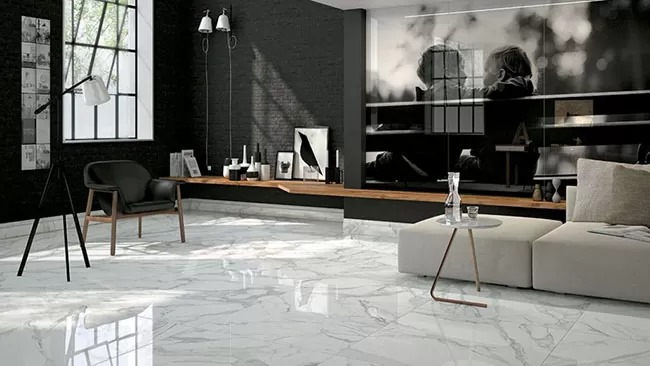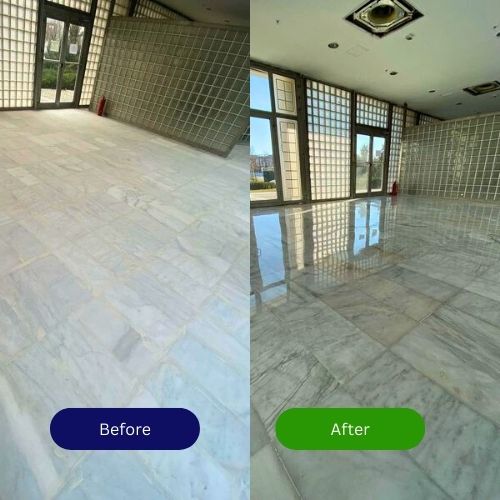A Professional Guide to Restoring Natural Elegance through Marble Polishing
Marble’s beauty, toughness, and classic appeal have long been appreciated.
It is used in both home and business settings as a representation of elegance and class. Marble, like all natural materials, needs to be maintained on a regular basis to maintain its original beauty.
A vital component of this upkeep is marble polishing, which provides a remedy for wear, scratches, and dullness over time.
We explore the subtleties of marble polishing in this extensive book, which covers its significance, methods, equipment, and professional tips for preserving polished surfaces.

Table of Contents
1.Introduction to Marble Polishing
2.Importance of Marble Polishing
3.Understanding Marble Types and Their Needs
4.Key Steps in Marble Polishing
5.Professional Tools and Techniques
6.Common Challenges in Marble Polishing
7.Choosing Between DIY and Professional Services
8.Pricing and Cost Considerations
9.Expert Tips for Long-Term Maintenance
10.Environmental and Sustainable Practices
11.Frequently Asked Questions
12.Conclusion
1. Introduction to Marble Polishing
Marble polishing is a specialized technique used to restore the smoothness and gloss of the surfaces.
It comprises removing stains, scratches, and other imperfections while enhancing the material’s overall look.
This process ensures that marble keeps both its flawless beauty and its durability.
2. Importance of Marble Polishing
Marble’s longevity and functionality are greatly impacted by polishing, which is more than just an aesthetic decision.
Advantages consist of:
1.Improved Aesthetics: Brings back the original richness of color and glossy finish.
2. Enhanced Durability: Prevents fractures and stains by decreasing porosity.
3.Hygiene: A polished surface keeps bacteria and grime at bay.
4.Property Value: Marble that is kept up increases the value of a property when it is sold.
3. Understanding Marble Types and Their Needs
Different marble varieties call for different polishing techniques.
Calcutta Marble: renowned for its opulent appearance and striking, dramatic veins.
Travertine: A porous stone that needs special care before being polished.
Crema Marfil: Known for its warm beige hues, this material requires delicate polishing methods.
4. Key Steps in Marble Polishing
The following are usually included in a professional polishing procedure:
a. Pre-Inspection and Preparation
Surface imperfections like etching, staining, or unevenness are found via a thorough examination.
b. Cleaning
To get the surface ready for grinding, a thorough washing eliminates dirt, oil, and old sealants.
b. Honing and Grinding
In order to prepare the surface for the final polish, this phase uses diamond abrasives to smooth and remove scratches.
d. Shining
To get a mirror-like finish, this calls for the use of finer abrasives or specialty powders.
e. Sealing
Using a protective sealant guarantees that the marble will continue to be impervious to moisture and stains.

5. Professional Tools and Techniques
Experts use cutting-edge equipment to produce accurate and durable results:
Diamond pads: To ensure effective polishing and grinding.
Polishing compounds: increase luster and eliminate small flaws.
Rotating machines: provide uniform application on wide surfaces.
Sealing solutions: These preserve the surface without changing how it looks.
6. Common Challenges in Marble Polishing
Marble polishing has its share of difficulties:
Sturdy Stains: They could need several cycles of polishing and cleaning.
Uneven Surfaces: These frequently need for sophisticated grinding methods.
Environmental Factors: The sealing process may be impacted by temperature and humidity.
7. Choosing Between DIY and Professional Services
Although do-it-yourself techniques are less expensive, they lack the accuracy and knowledge of professional services. A specialist guarantees:
Appropriate evaluation of marble kind and condition;
Use of premium tools and supplies.
Results that last with little chance of injury.
8. Pricing and Cost Considerations
Marble polishing prices vary depending on a number of factors:
Area Dimensions: Naturally, larger surfaces cost more.
Marble Condition: More work is needed on marble that is severely stained or damaged.
Location: Regional variations exist in labor prices.
Professional services in the United Arab Emirates usually cost between AED 10 and AED 30 per square foot.
9. Expert Tips for Long-Term Maintenance
The following are necessary for maintaining polished marble:
Frequent cleaning with pH-neutral solutions.
Steering clear of acidic or abrasive cleaning agents.
To reduce wear, place mats in high-traffic areas. Arrange for routine professional repair.

10. Environmental and Sustainable Practices
In marble polishing, sustainability comprises:
Utilizing non-toxic, environmentally friendly solutions;
Using less water throughout the procedure.
Reducing waste and recycling materials.
11. Frequently Asked Questions
Q1.What is the recommended frequency of polishing marble surfaces?
The frequency varies depending on wear and usage, it is usually advised to do so every one to three years.
Q2. Can deep cracks or scratches be repaired with polishing?
Polishing fixes flaws at the surface level. Before polishing, deep scratches or cracks might need to be repaired or ground down.
Q3. Does sealing change marble’s organic appearance?
Superior sealants provide protection without changing the look.
12. Conclusion
Maintaining the beauty, usefulness, and worth of this magnificent natural stone requires marble cleaning.
Property owners may make sure their marble surfaces stay beautiful and durable for many years to come by being aware of the methods and advantages of professional polishing.
Purchasing expert services, like those offered by Marble Polishing Doctor in the UAE, ensures the best quality of care and leaves your marble with a perfect, glossy sheen.
.
